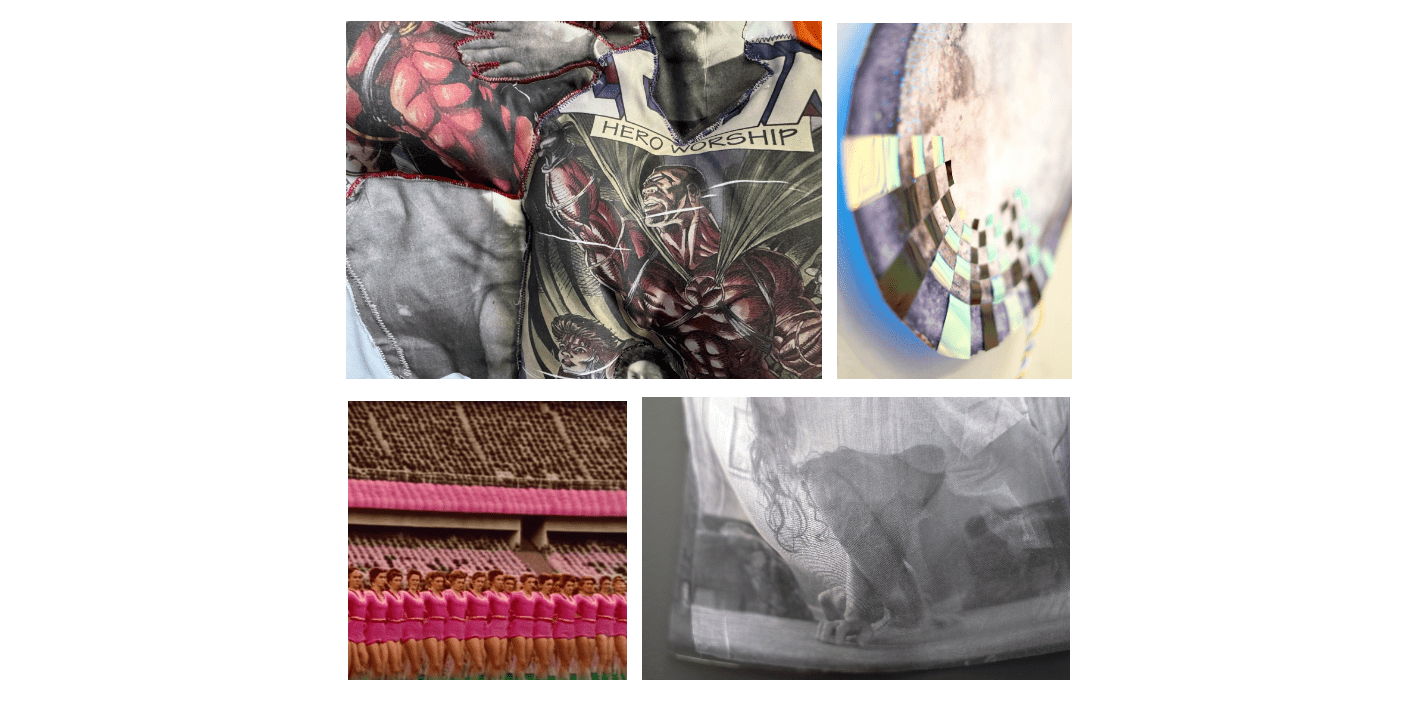
Reception: April 23, 6-8pm
Analog projection workshop with Jill McCarthy Stauffer & Trevon Jakaar Coleman: April 29, 7-9pm
Cyanotype workshop with Margaret Walker & Varvara Tokareva: May 7, 3-4pm
In the exhibition Palinopsia, Jill McCarthy Stauffer, Margaret Walker, Trevon Jakaar Coleman, and Varvara Tokareva bring memory to the forefront of experience. Sculpture, photography, electronic art, projection, painting, and screenprinting are utilized as tools to re/create imprints of what echoes from each artist's experiences. Each artist explores the ways in which images, events, and relationships linger in the personal and collective mind of place, culture, and time: emphasizing its malleability, playing with its perception, and considering how it relates to memory. Ultimately, this exhibition asks: how can materials be used to investigate the multitude of ways we experience time and construct the meaning it holds?
Trevon Jakaar Coleman’s research questions world building and the construction of being. Taking cues from comic books, (speculative) fiction, oral history, and historicized and personal archive, Coleman situates this multidisciplinary work in “the stutter," the space between, and claims dysfluency to disrupt familiarity. The work in this exhibition is an invitation into a process for exploring the potential for another world. Coleman’s work can be seen at trevonjakaar.com and on Instagram @trevonjakaar.
Jill McCarthy Stauffer’s work explores the transmutation of natural spaces through memory, metaphor, and digital processes. In coastal ecologies, they see metaphors for transformation, growth, cycles of death, and the hope for restoration. Mixed media installations combine personal experiences of light, sound, and shape in nature with scientific data and natural samples in order to unify both qualitative and quantitative experiences of place. In the work included in Palinopsia, Stauffer negotiates the increasingly interconnected relationship between technology, memory, and nature — the quality of the representation of natural landscapes in digital interfaces, built with materials mined from the earth, increases as the natural environment is further degraded. At the core of the work is a sense of anticipatory grief — of fear for a future where natural spaces are primarily experienced through digital media in the absence of the original. More of their work can be seen at jillmstauffer.com and on their Instagram @jillstauffer.art.
Varvara Tokareva is a graphic artist, designer and a printmaker. The main focus of her research is marginal visual culture of the so-called “New East” and the Soviet aesthetic of the late 70s. Her last projects explore different AI tools and question the authenticity of sources in generative art. In this exhibition she presents the installation "Utopia," created partly with generative models, based on video documents of the Olympic Games in Soviet Moscow in July 1980. The esthetics of military parade, thrilling preciseness of athletes' movements during performances, perfect alignment of choreography, huge numbers of participants — everything in this original record aimed to demonstrate the power of a certain political regime. But the artist highlights the absurdity of utopian ideas and shows another meaning behind the official records. More about Tokareva's works could be found on her website.
Margaret Walker’s work explores the memory of her body as a tool to connect family histories. Her photographs offer a perspective into the links created through objects, stories, and experiences. In this exhibition, Walker presents a series of original and archival images layered together documenting the parallels of her life to her mother and grandmother’s. Through the use of transparent and reflective imagery, she invites viewers to consider the role memory plays in human relationships and family attachment. More about Walker’s work can be found on her website margaretcannonwalker.com.
This exhibition and related programming is supported in part by the Maryland State Arts Council.
